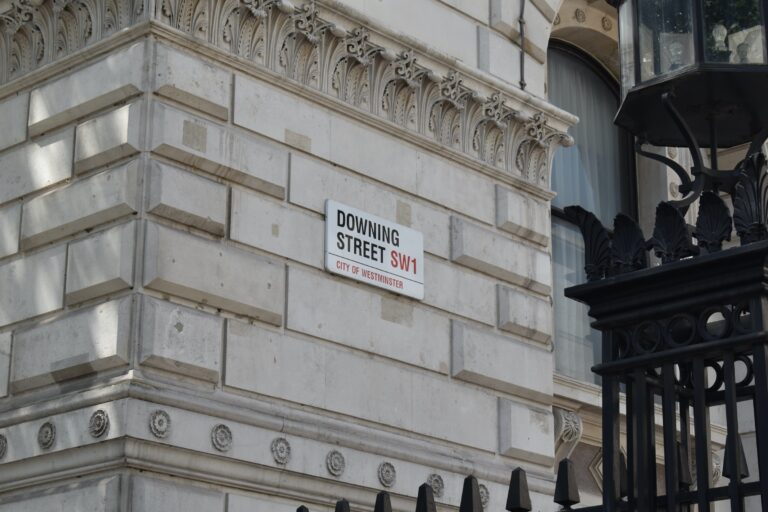Recently, several of the members of British Parliament wishing to be considered to be the next Leader of the Conservative Party and Prime Minister sought to differentiate themselves, from Boris Johnson and one another, based on their position on tax policy and tax settings.
Unlike Australia, removing a sitting prime minister is remarkable in the United Kingdom’s history. In Australia, the process of the party electing a new leader has, to date, never led to politicians publicly making their case based on proposals relating to tax policy, public finance and economic theory. So what is currently happening in the UK is extremely noteworthy. Given this, it is worth taking time to analyse the position of a selection of candidates and the merits of their claims.
What are the candidates’ positions on tax policy?
Sajid Javid (who withdrew from the running before the first hustings on 12th of July 2022) said he would cancel the planned increase in the headline corporate tax rate from 19% to 25% and instead reduce it to 15%. He also said he would reverse the payroll tax that was introduced by Chancellor Rishi Sunak. Javid argues that tax cuts will stimulate growth and this will allow the Government to maintain public services, such as funding education and the National Health Service. An implicit (unstated) part of Javid’s argument is that cutting the headline corporate tax rate will cause businesses to grow, increase business revenue, most likely increase productivity and wages and, in turn, increase revenue that the government can collect. The overall picture he paints is one of economic growth.
Jeremy Hunt (who was eliminated in the first ballot on 13th of July 2022) stated that his focus would be solely on corporate tax rates, not personal income tax rates. His argument is that he wants to avoid fuelling already rising prices in the UK and he wants to tackle inflation – his view is that adjusting the headline corporate tax rate will do neither. Like Javid, Hunt is supporting cutting the headline corporate tax rate to 15%.
Others have proposed corporate tax cuts among other changes, such as reducing the fuel tax, reducing the value-added tax rate and the National Insurance levy (see this summary of broader range of candidates’ positions).
Foreign Minister Liz Truss wrote last week ‘I would cut taxes from day one as Prime Minister’ and she described that her focus on corporate tax would be ‘making sure we keep corporate tax competitive to attract business and investment into Britain.’ She has not elaborated further on this so it is unclear what this means in terms of the rate and broader design questions at this stage.
Former Chancellor, Rishi Sunak, has stated the proposals being put forward by others are ‘fairy tales’, and that tax cuts were a question of ‘when not if’ but that they ‘must wait until inflation is brought under control.’ This is important as inflation in the UK reached 9.1% in the 12 months to May 2022, which is a 40 year high, and the Bank of England estimates this could reach 11% later this year.
The question of incidence
Completely absent in the debate around corporate tax is who would benefit from cutting the headline corporate tax rate – which is called ‘incidence’ of the corporate tax. The assumption of the proposals appears to be that reduced corporate tax rates would cause business to invest in activities that lead to growth on an individual, stand-alone basis, and that, when aggregated, this will contribute to growth across the broader economy.
There are problems with this assumption in both theory and practice. The academic literature on incidence shows that it is difficult to state with any precision who bears the burden of corporate tax. The body of literature indicates that incidence falls on some combination of shareholders and employees and is passed onto consumers. What you will notice from this list is that incidence falls on natural people, not on the corporation itself.
However, the literature does not indicate that the same people benefit from reductions in the headline corporate tax rate. Recent history in the United States bears this out.
The US experience
In 2017, among other measures, the Tax Cuts and Jobs Act (TCJA) reduced the headline corporate tax rate from 35% to 21%. At the time, the US Treasury Secretary argued that the measures in the TCJA would lead to GDP growth in the US over 3%; and other proponents of the bill argued that it would cause business to create new jobs, increase wages and allow US business to ‘dominate competition’ globally.
However, empirical studies following the TCJA’s introduction indicate that what actually happened was very different. Most notably, the changes led to a wave of share-buy backs. This created artificially higher share prices which boosted earnings per share metrics. Most benefits flowed to highly remunerated executive level managers of corporations (as this aligned with their key performance indicators or reward metrics), as well as shareholders (mostly those in the top 1% of the population). Some argued that a high level of share buy-backs is ‘dangerous’ for the economy as, among other things, it is likely to lead business to be more highly leveraged over time. The studies show that the TCJA had very little impact on growth and wages more generally. US GDP has not grown beyond 3% since 2017 and tax receipts declined between 2017 and 2019 (before the pandemic).
Lessons
There is little consensus in literature more broadly about whether corporate tax cuts lead to economic growth. This and the US experience indicates there is reason to query the assumptions that underlie the argument to cut the corporate tax rate that British Conservative MPs are making, particularly if those arguments are not coupled with proposals to reduce government spending.
Three further issues have, to date, been absent from the discussion but will be important for whoever ends up leading the Conservative Party and the country, in the context of the current tax settings in the UK.
First, there is evidence that a lower headline corporate tax rate reduces the incentive for corporations (and their advisors) to structure around or avoid the tax (in tax law literature, see Schizer 2016 and Brennan 2017, and also in economic literature, see for example Devereux and Maffini 2006). In principle then, lowering the headline corporate tax rate provides an inbuilt integrity measure that is advantageous compared with alternatives, namely applying general anti-avoidance rules after the fact. The challenge is finding the appropriate rate because the point at which the incentive disappears will differ between corporations depending on factors including risk appetite and ability to do aggressive tax structuring.
Second, the Organisation for Economic Co-operation and Development’s (OECD’s) remarkable feat of getting 136 countries to agree to ‘Pillars One and Two’ of its agenda to address base erosion and profit-shifting in October 2021, means that those countries are now in the process of writing domestic legislation to impose a global minimum tax on multinational enterprises (MNEs) with global turnover of €750,000 million (Pillar 2). The formally agreed level of the global minimum tax is 15%. There is still some uncertainty around when this will take effect.
The optics of a country having a 15% floor on corporate tax for certain MNEs and a second, potentially higher, rate for domestic corporations that are run by the voting public is unlikely to be understood by and may grate on the general public. Alignment of the rate and floor for all corporations would remove this source of tension, but the economic merits of this idea would need to be tested.
Third, typically discussion of reducing tax rates includes consideration of whether to broaden the base to ensure a sustainable flow of revenue to the government. To date, adjusting the corporate tax base has not formed part of the discussion in the Conservative Party’s leadership race. In light of proposals, such as the Allowance for Corporate Equity (ACE) model (and the European Commission’s Debt-Equity Bias Reduction Allowance initiative which is functionally an ACE with modifications) and the destination-based cash flow tax, this is important. In Australia, discussions around implementing the OECD’s agenda and discussions around how to reform the domestic corporate tax system have been occurring independently, as two-track processes.
However, Professor Devereux observed at Oxford Centre for Business Taxation’s Summer Conference 2022 recently that because the base in an ACE model is narrower than under existing systems, more top-up tax is likely to end up being paid by MNEs under Pillar 2 in countries that use an ACE. This may not be desirable. Professor Devereux’s point also highlights a more significant issue, namely that it would be valuable for any reform of domestic corporate tax systems to be carefully thought about in conjunction with implementing the OECD’s agenda domestically, particularly Pillar 2.
Australia should expect more from prime ministerial aspirants
Overall, the proposals being put forward in the UK now are uncosted thought bubbles. Designing tax settings is challenging at the best of times and the exercise becomes treacherous when there are inflationary pressures that need to be managed.
However, compared with the Australian experience, the debate that has occurred in the UK on corporate tax has been refreshing. The Conservative candidates’ proposals have put forward very different ideas about how the tax system could be adjusted. Having a debate about options and their merits is healthy. Perhaps Australia should start to expect this level of thought from members of parliament who wish to be Prime Minister in the future.
Note: The author is grateful to Professor Michael Devereux, Centre for Business Taxation, Oxford, for the generous and thoughtful guidance he provided as she wrote this article. All errors and omissions are Alex’s.





Liz Truss clarified her position today on an interview on BBC Today. Here is an excerpt – https://www.bbc.co.uk/news/av/uk-politics-62256131
Adam Smith was there before them and anticipated that the optimal tax rate on mobile capital is zero. Like the Physiocrats he saw the answer to international tax competition was to move towards a territorial land rent tax. Nothing has changed,